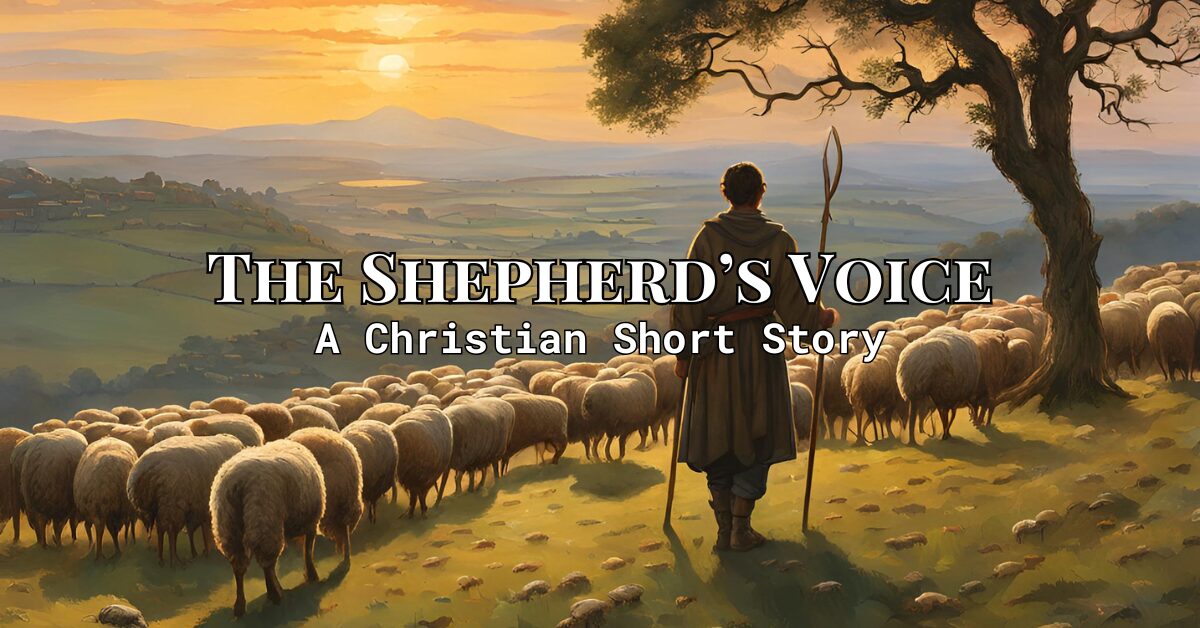Embarking on the journey of reading the Bible can be one of the most profound and transformative experiences in a person’s spiritual life. For many, the Bible is not just a book but a source of strength, guidance, and divine wisdom that has the power to illuminate the darkest paths and enrich the soul. However, taking the first steps on this journey often comes with a mix of excitement and apprehension. Beginners might wonder how to read the Bible in a way that is both meaningful and understandable, given its vastness and the depth of its teachings.
One common concern is where to start in a collection of texts that spans thousands of years of history and encompasses various genres, from poetry and prophecy to gospels and letters. Another is the worry about interpreting the passages correctly or uncovering the relevance of ancient scriptures in today’s world. These concerns are natural, but they should not deter you from exploring the rich spiritual landscape the Bible offers.
This introductory guide is designed to demystify how to read the Bible for those standing at the threshold of this rewarding journey. Here, we’ll share practical tips and strategies to not only begin reading but to also build a lasting and fruitful engagement with the scriptures. Whether you seek comfort, guidance, or a deeper understanding of your faith, learning how to read the Bible can open a new dimension of spiritual growth and insight. So, let us embark on this journey together, with open hearts and minds, ready to discover the transformative power that reading the Bible can bring into our lives.
Learn how to read the Bible with our article here.
Related: 12 Ways on How to Get Closer to God
Table of Contents
Setting Realistic Reading Goals

When embarking on the enriching journey of Bible study, one of the most crucial steps is setting realistic reading goals. This approach ensures that your encounter with the Bible is both rewarding and manageable, fostering a deeper connection with the scriptures over time.
The Significance of Manageable Goals
Understanding how to read the Bible effectively begins with recognizing that it’s a marathon, not a sprint. The Bible is a rich tapestry of narratives, teachings, and parables that span various cultures and epochs. Approaching it with the intention of quick completion might lead to frustration or burnout. Instead, setting achievable goals allows you to digest its profound messages thoroughly, reflecting on its teachings and integrating them into your daily life.
Recommendations for Starting Points
For many beginners, the question of where to start reading the Bible can be daunting. Here are a few suggestions to help you begin your journey:
The Gospels: Starting with the New Testament, specifically the Gospels of Matthew, Mark, Luke, and John, offers immediate insight into the life and teachings of Jesus Christ. These books provide a foundational understanding of Christian faith and principles.
Psalms and Proverbs: For those seeking wisdom and comfort, the books of Psalms and Proverbs in the Old Testament are excellent starting points. Their poetic and proverbial styles offer accessible spiritual insights and guidance for daily living.
Genesis: To understand the origins of the Judeo-Christian narrative, beginning with Genesis offers a historical and theological foundation that sets the stage for the entire Bible.
Setting realistic reading goals and choosing an appropriate starting point are essential steps in learning how to read the Bible. By approaching your reading journey with patience and a plan, you’ll find that the Bible opens up a world of spiritual depth, offering guidance, comfort, and insight for life’s many challenges and questions.
Understanding the Structure of the Bible

Grasping how to read the Bible begins with a basic understanding of its structure. The Bible is a compilation of sacred texts divided into two main sections: the Old Testament and the New Testament. Each part plays a distinct role in Christian theology, offering insights into God’s relationship with humanity.
The Old Testament
The Old Testament is a collection of texts sacred in Judaism and Christianity, chronicling the history, laws, and moral teachings from the creation of the world to the time before Jesus Christ’s birth. It includes various literary styles such as historical narratives, laws, wisdom literature, poetry, and prophecy. Understanding this part of the Bible provides a foundation for comprehending the rest of the Christian message.
The New Testament
The New Testament focuses on the life, teachings, death, and resurrection of Jesus Christ and the early Christian church’s formation. It consists of the Gospels, Acts of the Apostles, Epistles (letters), and the book of Revelation. The New Testament’s primary purpose is to convey the theological significance of Jesus Christ and guide Christian practice and belief.
Literary Styles within the Bible
The Bible encompasses a rich diversity of literary styles, including:
- Narrative: Both Testaments contain stories of individuals and nations, which often serve to illustrate moral and theological lessons.
- Poetry and Wisdom Literature: Books like Psalms, Proverbs, and Song of Solomon use poetic language to express worship, impart wisdom, and explore the complexities of human emotions and relationships.
- Prophecy: Prophetic books in the Old Testament, such as Isaiah and Jeremiah, contain messages from God delivered through prophets.
- Epistles: The New Testament includes letters written by early Christian leaders to churches or individuals, addressing theological issues, moral guidance, and community concerns.
- Apocalyptic Literature: Books like Daniel and Revelation use symbolic imagery to convey visions of the end times and God’s ultimate victory over evil.
Understanding the structure of the Bible and the various literary styles it encompasses is crucial for anyone learning how to read the Bible. This knowledge not only enhances comprehension but also enriches the reader’s ability to connect with the text on a deeper level.
Selecting a Bible Translation

One of the first steps in your journey to how to read the Bible is choosing a translation that best suits your needs and preferences. The Bible has been translated into many different versions to cater to various linguistic styles and levels of comprehension. Understanding the differences between these translations and paraphrases can significantly enhance your reading experience
Understanding Translations and Paraphrases
Translations of the Bible are created by scholars who interpret the original Hebrew, Greek, and Aramaic texts into other languages. These translations vary in their approach—from those aiming for a word-for-word accuracy to those adopting a more thought-for-thought translation philosophy, which seeks to capture the essence of the original meaning in a way that’s more accessible to contemporary readers.
Paraphrases, on the other hand, take more liberties with the text to make it even more understandable. They rephrase and interpret the original scriptures in a way that’s meant to be engaging and relatable, though they may sacrifice some precision for readability.
Tips for Finding a Version That Resonates
Consider Your Purpose: If you’re studying the Bible for in-depth theological understanding, a more literal translation like the New American Standard Bible (NASB) or the English Standard Version (ESV) might be beneficial. For daily reading and devotion, a thought-for-thought translation like the New International Version (NIV) or a paraphrase like The Message could be more accessible.
Sample Different Translations: Spend some time reading the same passage in different translations to see which style resonates more with you. Many Bible apps and websites allow you to easily compare translations.
Seek Recommendations: Talk to friends, clergy, or members of your faith community who are experienced in how to read the Bible. They can provide valuable insights into the strengths of various translations and help guide your choice.
Consider Supplementary Materials: Some Bibles come with additional resources like commentary, maps, and concordances that can enrich your understanding. Decide if these tools might be beneficial for your study and select a translation that includes them.
Choosing the right Bible translation is a personal decision that can significantly affect how to read the Bible and engage with its teachings. By taking the time to explore your options and consider what works best for you, you’ll find a version that not only enhances your understanding but also deepens your connection to the spiritual messages within its pages.
Integrating Bible Reading into Daily Life
For those wondering how to read the Bible as part of their daily routine, integrating Bible reading into daily life is a practice that can enhance your spiritual journey and bring the scriptures’ wisdom into everyday moments. Establishing a consistent reading routine and finding ways to incorporate reading into various parts of your day can transform your engagement with the Bible from a task to a cherished habit.
Establishing a Consistent Reading Routine
Consistency is key when it comes to developing any new habit, especially one as enriching as reading the Bible. Start by setting aside a specific time each day dedicated solely to Bible reading. Whether it’s first thing in the morning, during lunch breaks, or right before bed, choose a time when you’re least likely to be interrupted and can focus fully on the scripture. This helps in creating a routine that fits seamlessly into your daily life, making learning how to read the Bible more approachable and sustainable.
Incorporating Reading into Various Parts of the Day
Morning Inspiration: Begin your day by reading a passage from the Bible to set a positive tone for the day ahead. Morning reading can provide guidance, inspiration, and a moment of peace before the day’s activities commence.
Lunchtime Reflection: Midday breaks are an excellent opportunity to pause and reflect. Spending a few minutes reading the Bible can offer spiritual nourishment and a moment of tranquility in the middle of a busy day.
Evening Wind-Down: Ending your day with Bible reading can be a soothing practice, allowing you to reflect on the day’s events through a spiritual lens. It’s a time to find comfort in God’s word and prepare your heart and mind for rest.
On-the-Go Reading: For those with hectic schedules, integrating Bible reading into your commute via audio Bibles or Bible apps can be an effective way to ensure you’re engaging with scripture even when on the move.
Learning how to read the Bible doesn’t have to be daunting or time-consuming. By establishing a consistent routine and finding creative ways to weave scripture reading into your daily life, you can gradually build a deeper connection with the Bible and its teachings. The key is to start small, be patient with yourself, and enjoy the journey of discovery and spiritual growth that comes with regular Bible reading.
How to Read The Bible

Discovering how to read the Bible effectively can enrich your spiritual journey, offering insights and guidance tailored to your personal path of faith. There are several approaches to exploring the Scriptures, each with its unique benefits. Here’s a guide to various methods you can adopt, depending on your interests, goals, and the depth of understanding you seek.
1. Sequential Reading: Genesis to Revelation
Starting from Genesis and progressing through to Revelation offers a linear perspective of the Bible. This method allows you to experience the flow of biblical history, theology, and God’s plan for humanity from creation through to the end times. While this approach provides a comprehensive overview, it requires patience and perseverance, especially through complex books of law and prophecy.
2. Thematic Reading: Focusing on Specific Topics or Themes
If you’re particularly interested in certain subjects like love, forgiveness, or faith, thematic reading can be very rewarding. This approach involves selecting verses and passages across different books that relate to a specific theme. How to read the Bible through thematic study helps in understanding the multifaceted nature of God’s teachings on particular issues.
3. Chronological Reading: In Historical Order
For those curious about the historical and temporal context of biblical events, reading the Bible chronologically can offer a clearer understanding of how these events unfolded in real time. This method rearranges the books and passages according to when they historically occurred, providing a cohesive narrative of biblical history.
4. Story-by-Story: Narrative Focus
Focusing on the narrative books of the Bible, such as Genesis, Exodus, the Gospels, and Acts, allows readers to delve into the rich stories that form the backbone of biblical teachings. This approach is particularly appealing for beginners and those interested in the dramatic and relational aspects of Scripture.
5. Reading Plans and Apps: Structured Guidance
Utilizing reading plans and Bible apps can offer structure and guidance, making the goal of reading through the Bible more attainable. These tools often include daily readings, thematic plans, and chronological guides, helping to break down the reading process into manageable portions. They are great for those wondering how to read the Bible in a more organized manner.
Examples (click to read about each):
- Plans
- Apps
- YouVersion Bible app – Best app on market
- Logos Bible Study – for Apple devices
- Dwell app – Audio
6. Creative Approaches: Engaging with Scripture
Incorporating creative elements like art, journaling, or music into your Bible reading can enhance understanding and retention. For instance, illustrating a verse, writing reflections, or composing music based on biblical themes can deepen your engagement with the text. These practices invite a personal and emotional connection with Scripture, making the experience of learning how to read the Bible not just an intellectual exercise but also a heart-centered journey.
Each of these methods offers a unique pathway into the depths of Scripture. Whether you prefer a structured approach or a more creative engagement, the key to how to read the Bible is finding a method that resonates with your personal faith journey and inspires consistent engagement with God’s Word.
Leveraging Study Tools and Resources

For those embarking on the enriching journey of learning how to read the Bible, leveraging a variety of study tools and resources can significantly enhance your understanding and engagement with the Scriptures. From study guides and commentaries to apps and devotionals, a wealth of resources is available to support your exploration of the Bible.
Introduction to Helpful Resources
- Study Bibles: These are invaluable for anyone learning how to read the Bible. Study Bibles come with notes, explanations, and references right on the page, offering insights into historical context, interpretations of difficult passages, and thematic studies. Examples:
Bible Commentaries: For deeper exploration of specific books or passages, commentaries provide detailed analysis and background information, written by theologians and biblical scholars. They can illuminate complex texts and enhance your understanding. Examples:
Bible Study Apps and Online Tools: In the digital age, a plethora of apps and online resources offer convenient access to Bible translations, commentaries, and lexicons. Features like search functions, parallel reading, and interactive study plans make these tools particularly helpful. Examples
- Bible Study Tools
- Blue Letter Bible – Apple here – Android here
The Benefit of Using Devotionals and Reading Plans
Devotionals: These are designed to help readers connect personally with biblical texts, offering daily reflections, prayers, and actionable insights. For those learning how to read the Bible, devotionals can provide a structured and engaging way to explore Scripture in the context of daily life. Examples:
Reading Plans: Whether you’re aiming to read the Bible in a year or focus on specific themes or books, reading plans offer a guided approach. They can help you maintain a consistent reading habit, ensure a comprehensive exploration of the Bible, and keep you motivated with achievable milestones. Examples:
Utilizing these tools and resources can transform your experience of learning how to read the Bible from a daunting task to a fulfilling journey of discovery. By providing context, clarification, and daily guidance, they empower you to delve deeper into the Scriptures, enriching your spiritual life and understanding of God’s word.
Engaging Actively with the Scripture

As you embark on the journey of learning how to read the Bible, it’s crucial to move beyond passive reading to active engagement. Immersing yourself in Scripture not only involves reading the words but also interacting with them in a way that they resonate with your life and experiences. Here are some strategies to help you engage more deeply with the Bible.
Note-Taking and Journaling
One effective method for engaging with Scripture is through note-taking and journaling. As you read, jot down thoughts, questions, or insights that come to mind. This practice can help clarify your understanding and encourage deeper reflection on the text. Journaling provides a personal space to explore how the Bible’s teachings apply to your life, allowing you to record prayers, reflections, and revelations. For those learning how to read the Bible, this method can be particularly enlightening, turning each reading session into an opportunity for personal growth and discovery.
Asking Reflective Questions
Approach your Bible reading with curiosity and openness by asking reflective questions. Consider inquiries such as, “What is this passage teaching me about God’s character?” “How does this apply to my life?” or “What changes does this inspire me to make?” Asking questions encourages you to dig deeper and find personal relevance in the Scriptures, making the process of learning how to read the Bible more interactive and meaningful.
Meditating on Scripture
Meditation on Scripture is a powerful tool for internalizing God’s Word. After reading a passage, take some time to meditate on its meaning and relevance to your life. This can involve silent reflection, prayerful consideration, or even memorization of key verses. Meditation allows you to ponder the spiritual and practical implications of the Bible’s teachings, facilitating a deeper connection between the Scripture and your daily life.
For anyone learning how to read the Bible, engaging actively with the text is essential for a transformative reading experience. By incorporating note-taking, journaling, asking questions, and meditating on the Scriptures, you open yourself to the profound wisdom and guidance that the Bible offers. These practices not only enhance your understanding but also foster a deeper, more personal relationship with God through His Word.
Related: 5 Ways of Christian Meditation
Participating in Group Bible Study
For those dedicated to learning how to read the Bible, participating in a group Bible study can be an enriching and transformative experience. The collective exploration of Scripture not only fosters a deeper understanding but also builds a sense of community and shared faith. Let’s delve into the benefits of group study and how you can find and join a study group.
Advantages of Collective Study for Deeper Understanding
Group Bible study brings together individuals from diverse backgrounds and experiences, offering a variety of perspectives on the Scriptures. This collective approach allows participants to share insights, ask questions, and explore different interpretations, enriching the learning process for everyone involved. Discussing Scripture in a group setting can illuminate passages in ways that might not be apparent when studying alone. Moreover, group study encourages accountability, motivating participants to stay engaged and consistent in their reading. For anyone learning how to read the Bible, the support and encouragement of a group can be invaluable in navigating challenging passages and concepts.
How to Find and Join Study Groups

Finding the right Bible study group can significantly enhance your journey of learning how to read the Bible. Here are a few ways to find a group that suits your needs:
Church or Religious Community: Many churches and religious communities offer Bible study groups for members. These groups can vary in focus, from general studies to more specific topics or books of the Bible.
Online Platforms: With the rise of digital communication, numerous online Bible study groups have emerged. Platforms like social media, religious forums, and dedicated Bible study apps provide opportunities to join global communities of believers. Examples:
- Meetup
- Bible Study Fellowship
- Bible Café – Virtual Bible Study Groups
Local Libraries or Community Centers: Some local libraries and community centers host interfaith or non-denominational Bible study groups. These can be a great option for those looking for diverse and inclusive environments.
Start Your Own Group: If you can’t find a group that fits your interests or schedule, consider starting your own. Invite friends, family, or community members to explore the Bible together. This can be an incredibly rewarding way to engage with Scripture.
Participating in a group Bible study offers a dynamic and communal approach to learning how to read the Bible. By sharing the journey with others, you gain access to a wealth of knowledge, perspectives, and encouragement, making the process of delving into Scripture both enlightening and enjoyable.
The Role of Prayer in Bible Reading

In the journey of learning how to read the Bible, prayer plays a pivotal role in opening our hearts and minds to the divine wisdom contained within its pages. Engaging in prayer before and after Bible reading is not just a ritual; it’s a practice that invites God’s presence, guidance, and understanding into the process, transforming the act of reading into a profound spiritual experience.
Seeking Divine Insight Before Reading
Before delving into the Scriptures, starting with a prayer is a powerful way to prepare yourself spiritually and mentally. This prayer is an invitation for the Holy Spirit to act as your guide, illuminating the text and revealing its meanings in ways that resonate with your life and circumstances. It’s about asking for the clarity to understand complex passages and the wisdom to discern the lessons they hold.
By praying for divine insight before reading, you acknowledge the Bible not merely as a historical or literary work but as the living Word of God, capable of speaking into your life today. This practice underscores the essence of learning how to read the Bible—approaching it with humility and openness to what God wants to reveal to you.
Seeking Understanding and Application After Reading
After spending time in Scripture, concluding with prayer is equally important. This closing prayer is an opportunity to reflect on what you’ve read, thanking God for the insights received and seeking the strength and courage to apply these teachings in your daily life. It’s a moment to ponder the personal implications of the Scriptures, asking for guidance in living out the values and commands encountered in your reading. This prayer can also be a time to present any questions or doubts that arose during your reading, seeking further clarity and peace.
Prayer envelops the entire reading process in a spiritual dialogue, turning learning how to read the Bible into a dynamic interaction with God. Through prayer, Bible reading becomes more than an intellectual exercise; it evolves into a meaningful practice that deepens your relationship with God, enhances your understanding of His word, and transforms your life in accordance with His will.
Conclusion: Embracing Your Journey in Learning How to Read the Bible
As we wrap up our exploration on how to read the Bible, let’s revisit the pivotal steps that serve as beacons on this enlightening path. For anyone embarking on the journey of learning how to read the Bible, understanding that this process is both a spiritual quest and a personal exploration is vital. The Bible, with its profound depth and breadth, offers endless wisdom and guidance for those willing to delve into its teachings.
Starting your Bible reading adventure with realistic goals and a clear understanding of the Bible’s structure lays the foundation for a meaningful engagement with the scriptures. Whether you’re drawn to a sequential, thematic, chronological, or story-by-story approach, each strategy offers a unique lens through which to view the biblical narrative.
Learning how to read the Bible isn’t about rushing through chapters; it’s about connecting with the heart of God’s message and finding ways to apply its timeless truths to your life.
As you continue on your journey of how to read the Bible, approach each reading session with an open heart and mind. Be patient with yourself and allow your unique path to unfold. The Bible is not just a book to be read, but a living word to be experienced. Its teachings can inspire, challenge, and change you, offering new insights with every reading.
Remember, learning how to read the Bible is a journey that offers as much diversity in its approach as it does in its impact. There’s no single way to explore the scriptures; rather, there’s a world of discovery waiting for those ready to embark on this spiritual adventure. May your journey through the Bible be filled with enlightening revelations, comforting truths, and transformative moments that draw you ever closer to the divine.
Also Read: The Full Guide to Christian Fasting








